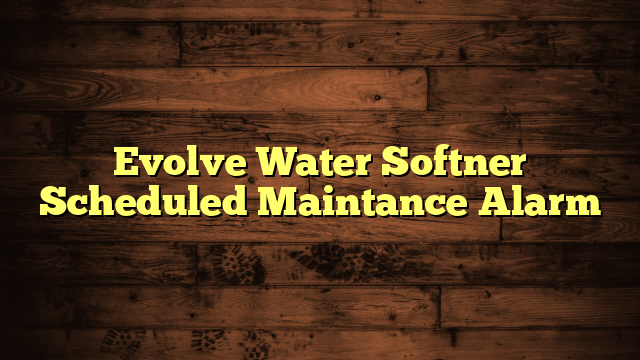How to Know if Water Softner Is Working?
You might be wondering how to tell if your water softener is actually doing its job. If you're seeing scale buildup on your fixtures, dealing with stiff laundry, or having to refill the salt more often than expected, those could be signs of a problem. Regular water hardness tests can also shed light on whether your system is functioning properly. However, there are more subtle indicators to take into account that could affect your daily life. What else should you be on the lookout for to verify your softener is working effectively?
Key Takeaways
- Look for scale buildup on faucets and appliances; its presence indicates poor softening performance.
- Test water hardness regularly; significant hardness levels suggest the softener isn't working effectively.
- Monitor water flow and pressure; weak flow may indicate blockages or softener issues.
- Inspect the brine tank and resin bed for salt levels and clumping; these affect softener efficiency.
- Notice any soap scum or mineral residue on surfaces; these signs reveal ineffective softening.
Signs of Ineffective Softening
Recognizing the signs of ineffective softening is vital for maintaining your home's water quality. If you notice scale buildup on faucets, showerheads, or in appliances, it's likely your water softener isn't functioning well.
Another red flag is when your laundry feels stiff or appears dingy after washing. This could indicate poor softener efficiency, meaning your system isn't properly removing hard minerals.
You should also keep an eye on your salt levels. If you frequently need to refill the salt, but still experience hard water symptoms, it suggests your softener isn't utilizing the salt effectively.
It's important to check for salt bridges or clogs that can hinder the softening process.
Additionally, if your water has an unusual taste or odor, this could signal that your softener isn't working as it should.
Regular maintenance can help prevent these issues. By staying vigilant and addressing these signs early, you can guarantee your water softener operates efficiently, providing you with clean, soft water.
Test Your Water Hardness
To assess whether your water softener is truly effective, testing your water hardness is a straightforward and reliable method.
Water testing can help you determine if your softener is doing its job. Here's how you can start your hardness testing:
- Collect a Sample: Grab a clean container and fill it with a sample of your water.
- Choose a Test Kit: Purchase a water hardness test kit from a local store or online. These kits are easy to use and come with clear instructions.
- Follow the Instructions: Use the kit as directed, mixing your sample with the provided solution.
- Compare Results: Check the color change against the chart included in the kit to see your water hardness level.
Check for Soap Scum
To check if your water softener is doing its job, take a close look at the soap scum in your shower, on your dishes, and even on your laundry.
If you notice a buildup of residue, it could mean your hard water isn't being effectively softened. Observing these areas can give you a clear indication of your system's performance and help you determine if any adjustments are needed.
Observe Shower Residue
While you mightn't think about it often, checking for soap scum in your shower can reveal a lot about your water softener's effectiveness. If you notice a film of residue buildup, it could indicate that your water softener isn't working as it should.
Soap scum not only affects shower cleanliness but can also lead to frustrating cleaning chores. Here's what to keep an eye on:
- Presence of soap scum: Noticeable residue on tiles and glass surfaces suggests hard water issues.
- Texture change: If your shower feels slimy or grimy, it's a sign of mineral buildup.
- Frequent cleaning: If you find yourself scrubbing more often than usual, your water softener mightn't be doing its job.
- Water spots: Check for stubborn water spots on fixtures; these can indicate hard water minerals in your supply.
Examine Dishes and Glassware
Checking your dishes and glassware can also provide insight into your water softener's performance. If you notice soap scum or residue on your plates and cups, it could indicate that your water softener isn't functioning effectively.
You expect your dish cleanliness to be excellent, especially after running them through the dishwasher. If they come out with a cloudy appearance or a film on the surface, it's likely a sign of hard water minerals lingering on your items, which shouldn't happen with a properly working softener.
When examining glassware, pay close attention to glass clarity. Sparkling, clear glasses should be the norm; any dullness or streaks suggest that hard minerals are still present in your water.
This can't only affect the aesthetic of your dishes but can also lead to long-term issues, like etching or damage to your glassware.
To guarantee your water softener is doing its job, regularly inspect your dishes and glassware after washing. If you consistently see soap scum or lackluster clarity, it may be time to troubleshoot your water softener or consult a professional for assistance.
Assess Laundry Cleanliness
After doing a load of laundry, take a moment to assess the cleanliness of your clothes.
It's crucial to check for any soap scum, which can indicate that your water softener isn't functioning properly. If you notice soap scum, it might affect both stain removal and fabric softness.
Here's what to look for:
- Dull-looking fabrics: If your clothes appear less vibrant, it could be a sign of soap residue.
- Stiff or rough textures: Fabrics should feel soft and luxurious; any stiffness might indicate hard water issues.
- Persistent stains: If stains remain despite washing, your water may not be soft enough for effective stain removal.
- White residue on clothes: A telltale sign of soap scum, this residue can ruin the appearance of your laundry.
If you encounter any of these issues, consider checking your water softener.
A functioning system should enhance your laundry experience, ensuring both cleanliness and the soft touch of your fabrics.
Examine Your Laundry
One of the easiest ways to determine if your water softener is doing its job is by examining your laundry. After washing your clothes, take a close look at the laundry colors. If they appear dull or faded, it could indicate that hard water minerals are still present in your washing machine, interfering with the detergent's effectiveness.
Softened water helps maintain vibrant colors and prevents those annoying stains caused by mineral buildup.
Next, pay attention to the fabric softness. Clothes washed in hard water often feel stiff or scratchy. With a functioning water softener, you should notice a significant improvement in fabric softness. Your towels, sheets, and clothes should feel fluffy and pleasant against your skin.
If they still feel rough or unyielding, it might be time to check your water softener.
Ultimately, if your laundry colors remain bright and your fabrics feel soft, you can be confident that your water softener is effectively doing its job. Regularly examining these aspects of your laundry won't only help you assess your water softener's performance but also enhance your overall laundry experience.
Monitor Water Flow Rate
To guarantee your water softener is functioning properly, it's crucial to monitor the flow rate.
Start by measuring the inlet water pressure; this gives you a baseline for performance.
Then, check the outflow consistency and look for any changes in flow rate, as these indicators can reveal if your system needs attention.
Measure Inlet Water Pressure
Measuring your inlet water pressure is essential for determining if your water softener is functioning properly. A consistent water pressure guarantees that your system can effectively soften your water.
If you notice fluctuations or low pressure, it could indicate an issue with your softener. Use a pressure gauge to check the inlet pressure regularly.
Here are some signs to watch out for:
- Weak Water Flow: If you're experiencing lower water pressure than usual, it could indicate a blockage or malfunction.
- Unusual Sounds: Strange noises from the water softener can signal that it's struggling to process water effectively.
- Hard Water Signs: If you're still seeing scale buildup or hard water stains, it may mean your softener isn't working as it should.
- Inconsistent Water Temperature: Changes in temperature can also reflect pressure issues that affect your softener's performance.
Regularly monitoring your inlet water pressure can help you catch problems early, guaranteeing that your water softener remains efficient.
Keep an eye on these indicators, and you'll maintain the quality of your softened water.
Check Outflow Consistency
After checking your inlet water pressure, the next step is to monitor the outflow consistency of your water softener. Keeping an eye on both outflow temperature and outflow pressure can provide valuable insights into your system's performance.
First, check the outflow pressure; it should remain steady and within the manufacturer's recommended range. If you notice fluctuations, it could indicate an issue with the softener's functionality.
Next, assess the outflow temperature. A consistent temperature is essential, as significant variations might signal a malfunction or other underlying problems. For example, if the water feels unusually hot or cold, it's worth investigating further.
To effectively monitor these parameters, consider using a pressure gauge or a thermometer specifically designed for this purpose. By regularly checking the outflow consistency, you can spot issues early, ensuring your water softener operates efficiently.
This proactive approach not only prolongs the life of your system but also helps maintain the quality of your water. Remember, a well-functioning water softener contributes to cleaner dishes, softer laundry, and an overall better experience in your home.
Assess Flow Rate Changes
Monitoring the flow rate of your water softener is crucial for identifying any potential issues. By paying attention to flow rate changes, you can guarantee your water softener is working effectively and maintaining adequate water pressure throughout your home.
If you notice fluctuations in the flow rate, it might indicate a problem that needs addressing.
Here's how to assess flow rate changes:
- Check for Reduced Flow: If your taps suddenly produce less water, it could signal a clogged system or malfunction.
- Watch for Sudden Increases: An unexpected surge in flow rate may suggest a leak somewhere in the system.
- Monitor Water Pressure: Consistent pressure is crucial. If you notice a drop, inspect your softener for issues.
- Record Changes Over Time: Keeping a log of flow rate changes helps you spot trends and address problems proactively.
Inspect the Softener Unit
Inspecting the softener unit regularly guarantees it's functioning properly and efficiently. To verify your water softener is doing its job, pay close attention to various softener components during your unit inspection. Look for signs of wear or damage, such as leaks, rust, or cracks. It's crucial to check the brine tank, control valve, and resin bed for any abnormalities.
Here's a quick checklist to help you during your inspection:
| Component | What to Look For | Action Required |
|---|---|---|
| Brine Tank | Salt level and clumping | Refill or clean |
| Control Valve | Leaks or unusual noises | Tighten or replace |
| Resin Bed | Discoloration or clumping | Regenerate or replace |
Schedule Regular Maintenance
How can you verify your water softener continues to perform effectively? Scheduling regular maintenance is key.
Keeping your system in top shape not only extends its lifespan but also guarantees you get the best results. Use a maintenance checklist to keep track of essential tasks and adhere to suggested service frequency.
Here are four vital maintenance tasks you shouldn't overlook:
- Inspect Salt Levels: Low salt can lead to hard water issues, so check your salt levels monthly.
- Clean the Brine Tank: Buildup can hinder performance, so clean the tank at least once a year.
- Check for Leaks: Regularly inspect hoses and connections for leaks, which can waste both water and salt.
- Test Water Quality: Conduct water tests every few months to verify your softener is effectively reducing hardness.
Frequently Asked Questions
How Often Should I Replace Water Softener Salt?
You should check your water softener salt every month. Depending on the salt types you use, replace it when it's low. Regular maintenance tips include cleaning the brine tank to guarantee efficient operation.
Can Hard Water Affect My Health?
You know the saying, "You are what you drink." Hard water can lead to health effects like mineral buildup in your body. While it's generally safe, excessive minerals might cause digestive issues or skin irritation for some.
What Is the Lifespan of a Water Softener?
A water softener typically lasts 10 to 15 years with proper maintenance. Regularly checking its efficiency can prolong its life, ensuring you enjoy soft water and avoid costly repairs or replacements down the line.
How Do I Choose the Right Water Softener?
Choosing the perfect water softener isn't rocket science. Start by evaluating your water quality and calculating the right system size based on your household's needs. You'll find a solution that makes your water feel luxurious.
Can I Install a Water Softener Myself?
Yes, you can install a water softener yourself. With some DIY installation skills, you'll enjoy water softener benefits like reduced scale buildup and softer skin. Just follow the manufacturer's guidelines for a successful setup.
Conclusion
In summary, keeping your water softener in check is essential for maintaining soft water and protecting your home. Did you know that over 85% of U.S. homes have hard water? Regularly testing your water hardness, inspecting your softener, and looking for signs of inefficiency can save you from costly repairs and discomfort. By staying proactive, you can guarantee your water softener does its job effectively, providing you with cleaner, softer water for everyday use.







